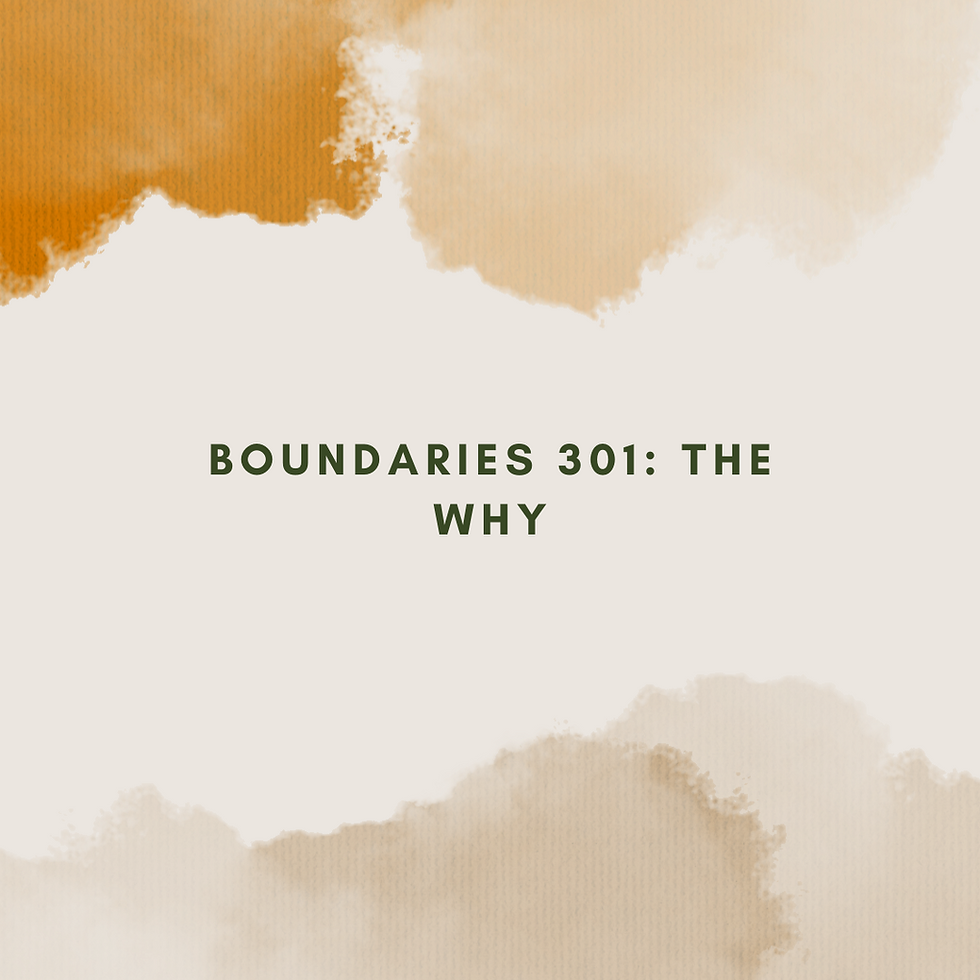Building Strong and Secure Relationships: The Importance of Understanding Why Boundaries Matter (Boundaries 301)
- Melanie Cooke
- Nov 12, 2023
- 3 min read
Updated: Dec 28, 2023
This week, 'Therapy Begins with Tea' steeps on the 'why' of boundaries -- their risks & rewards -- and explores how you can use boundaries to practice more secure attachment.

Therapy Begins with Tea is a weekly newsletter based on the themes that come up in my sessions as a therapist who specializes in imposter syndrome, attachment styles in romantic relationships, and our psychological relationships with money. Each week consists of a 'steep' in thought reflection, an accompanying body based check-in, and tea card intentions for the week to come.
'Steep' in Thought (3-5 min)
Boundaries RECAP
Over the last two weeks, we’ve gone into the ‘what’ and the ‘how’ of boundaries. Boundaries help us have healthy, safe, and fulfilling relationships, but, at times, they can be difficult to enforce because we can’t know for sure how others will respond to them. Remember, boundaries contextualize our responses to others’ behaviors; they can’t (and won’t) dictate other people’s behaviors. Sometimes, it can feel like the risk of boundaries might be higher than the reward. So today, we’re going into the ‘why’ -- why they’re worth setting (and communicating and enforcing) and why therapists talk about them so much.
boundaries and vulnerability
Intimacy and belonging are born out of interconnectedness & interdependence, which, undoubtedly involve our favorite word: vulnerability. Fulfilling relationships require a balance of closeness and space, so boundaries allow us to be vulnerable & connect (closeness) while also preserving our autonomy and sense of self (space). TL;DR: boundaries make vulnerability safer.
boundaries & secure attachment
Boundaries, as a way to balance closeness and space, are a key characteristic of secure attachment. Boundaries can help us unlearn tendencies of anxious (where we lean too much into closeness) and avoidant (where we lean too much into space) attachment styles by acting as a bridge between the two.
A final note: if we’re talking about boundaries, we must also remember that boundaries exist in the realm of power and privilege. Our intersecting identities, and the power (or lack of power) prescribed to them, unfortunately & absolutely affect both the way we navigate our boundaries and the way other people judge their validity. Sometimes it is not safe to enforce our boundaries -- and even if we do, we might be punished for them. That is a failure of society, not the individual.
I encourage you to practice the full body check-in below to better understand your personal ‘why’ of boundaries.
Full Body Check-In (2-4 min)
When you’re ready, start with the breath. If it’s comfortable, keep your eyes open at first. Breathe in, feel the chest and belly and back expand. Breathe out, feel everything relax and come together, back to your core. In through the nose, out through the mouth in a sigh. As you breathe, look around you. Observe 5 things you can see. As you continue to breathe, begin to close your eyes. Now, notice 4 things you can feel (e.g. your feet on the floor or cloth on your skin). Keep breathing. Now, 3 sounds you can hear. Breathe and count. 2 things you can smell. Breathe. 1 thing you can taste. You’re welcome to stay here, present and noticing, as long as you’d like.
If you’d like to go deeper, take a few minutes and explore these questions. Sit patiently & see what comes up.
How can boundaries help me connect more safely?
Do they help me be closer to people, to show more vulnerability?
Do they help me make space for myself in relationships?
Boundaries can be a bridge between closeness and space. Where do I lean? Where do I want to grow more? How can boundaries help me do that?
.
Want this straight to your inbox? Sign up for the newsletter to receive weekly steeps, body check-ins, and tea card intentions for the week to come.
T




